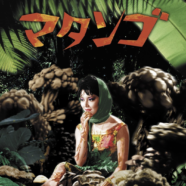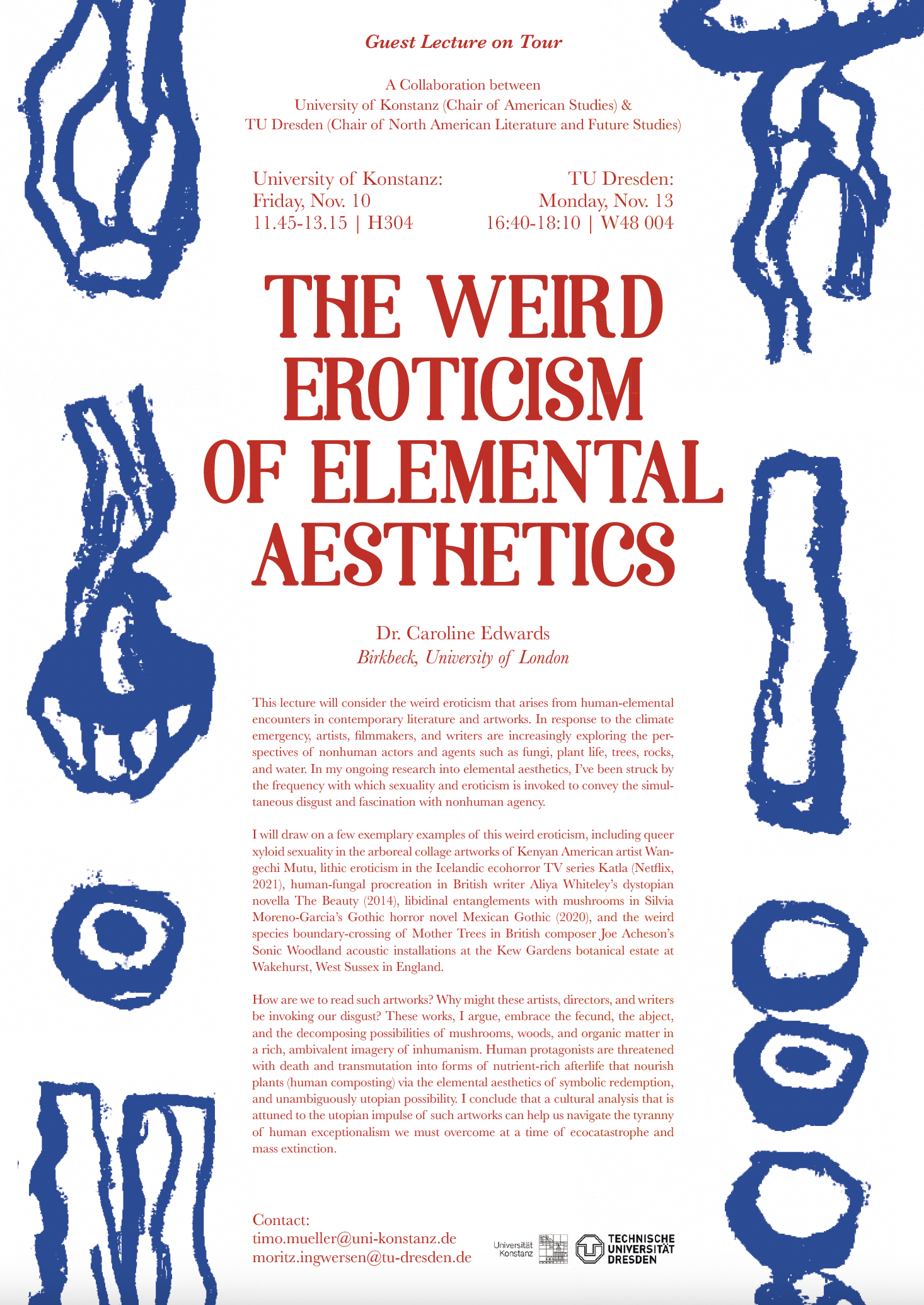Weird Eroticism
I’ve just returned from a mini lecture tour in Germany! It was an honour to be invited to share my work on the current elemental aesthetics book project with colleagues and students at the University of Konstanz and TU Dresden, at the invitation of Prof. Timo Müller (Professor of American Studies at the University of Konstanz) and Jun.-Prof. Dr. Moritz Ingwersen (Chair of North American Literature with a Focus on Future Studies at TU Dresden).
The lecture was titled “The weird eroticism of elemental aesthetics” and considers the weird eroticism that arises from human-elemental encounters in contemporary literature and artworks. In response to the climate emergency, artists, filmmakers, and writers are increasingly exploring the perspectives of nonhuman actors and agents such as fungi, plant life, trees, rocks, and water. In my ongoing research into elemental aesthetics, I’ve been struck by the frequency with which sexuality and eroticism is invoked to convey the simultaneous disgust and fascination with nonhuman agency. I draw on a few exemplary examples of this weird eroticism, including queer xyloid sexuality in the arboreal collage artworks of Kenyan American artist Wangechi Mutu, lithic eroticism in the Icelandic ecohorror TV series Katla (Netflix, 2021), human-fungal procreation in British writer Aliya Whiteley’s dystopian novella The Beauty (2014), libidinal entanglements with mushrooms in Silvia Moreno-Garcia’s Gothic horror novel Mexican Gothic (2020), and the weird species boundary-crossing of Mother Trees in British composer Joe Acheson’s Sonic Woodland acoustic installations at the Kew Gardens botanical estate at Wakehurst, West Sussex in England.
How are we to read such artworks? Why might these artists, directors, and writers be invoking our disgust? These works, I argue, embrace the fecund, the abject, and the decomposing possibilities of mushrooms, woods, and organic matter in a rich, ambivalent imagery of inhumanism. Human protagonists are threatened with death and transmutation into forms of nutrient-rich afterlife that nourish plants (human composting) via the elemental aesthetics of symbolic redemption, and unambiguously utopian possibility. I conclude that a cultural analysis that is attuned to the utopian impulse of such artworks can help us navigate the tyranny of human exceptionalism we must overcome at a time of ecocatastrophe and mass extinction.
The second lecture was delivered on Monday 13 November 2023 as part of the TU Dresden undergraduate programme in a module on Nature and Technology in American Literature. You can watch a recording of this lecture below, or over on my YouTube channel.
Although this lecture draws on my current book manuscript, which is a work in progress, I have published and forthcoming publications on this material. The case studies exploring human-lithic eroticism are discussed in my article “Becoming-lithic: elemental utopian possibility in the contemporary ecocatastrophe”, which was published in Textual Practice, Vol. 37, No. 9 (2023), pp. 1364-1387 (the article is open access, so you can download or read it online). And the material on xyloid sexuality is written up in an article titled “Xyloid Sexuality: Dismantling the Human in Wangechi Mutu’s Arboreal Collages,” forthcoming with Cultural Politics in 2024. My thanks to Wangechi Mutu for granting permission for me to use images of her artworks for this piece of research.








 Dr Caroline Edwards is Senior Lecturer in Modern & Contemporary Literature at Birkbeck, University of London. Her research and teaching specialisms are in 21st century literature and critical theory, science fiction and post-apocalyptic narratives, Marxist aesthetics, and utopianism.
Dr Caroline Edwards is Senior Lecturer in Modern & Contemporary Literature at Birkbeck, University of London. Her research and teaching specialisms are in 21st century literature and critical theory, science fiction and post-apocalyptic narratives, Marxist aesthetics, and utopianism.
Follow / Contact